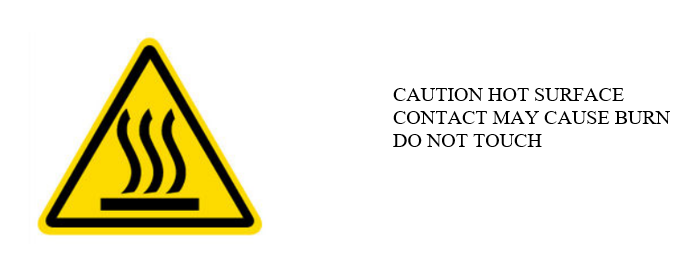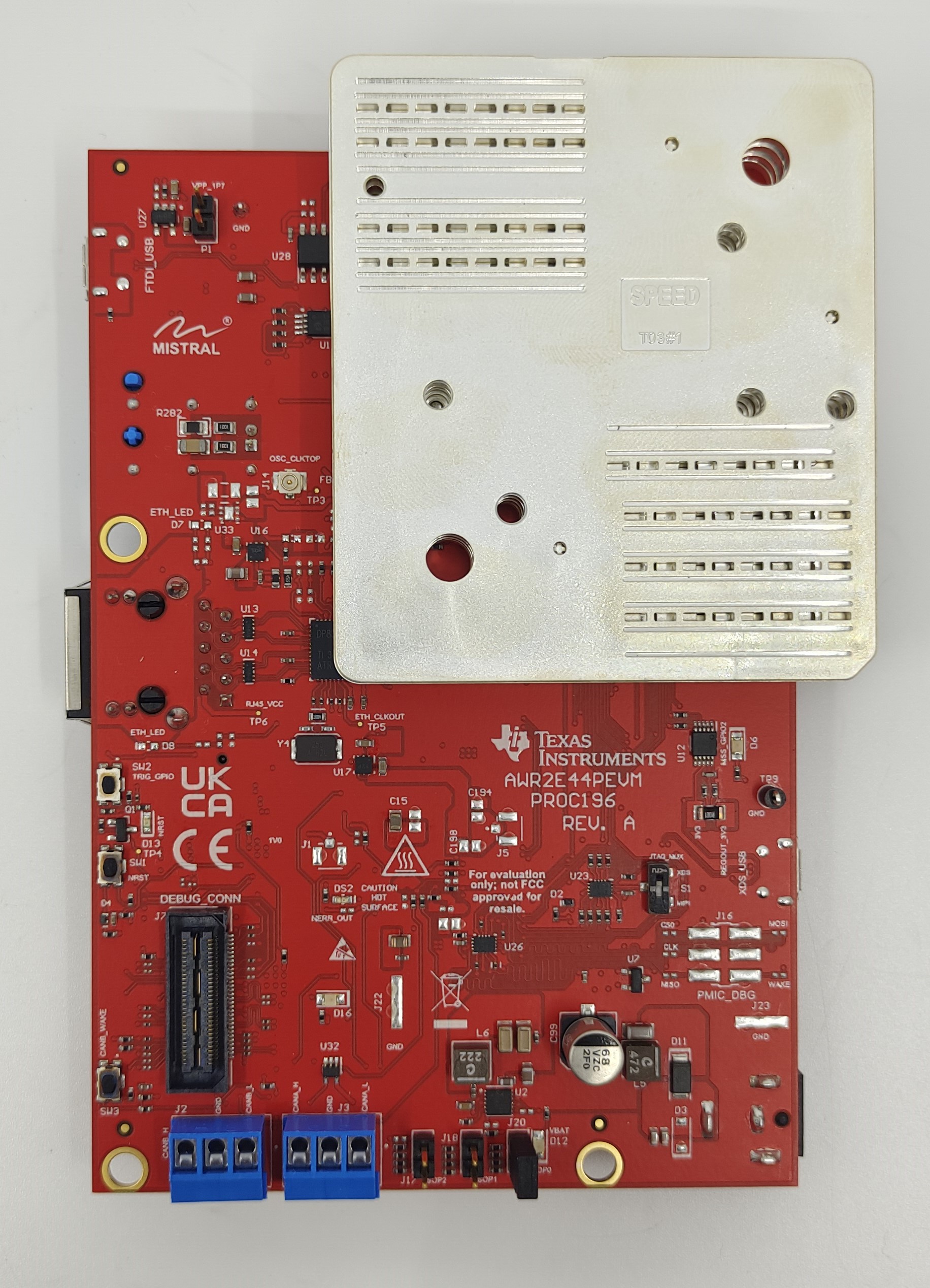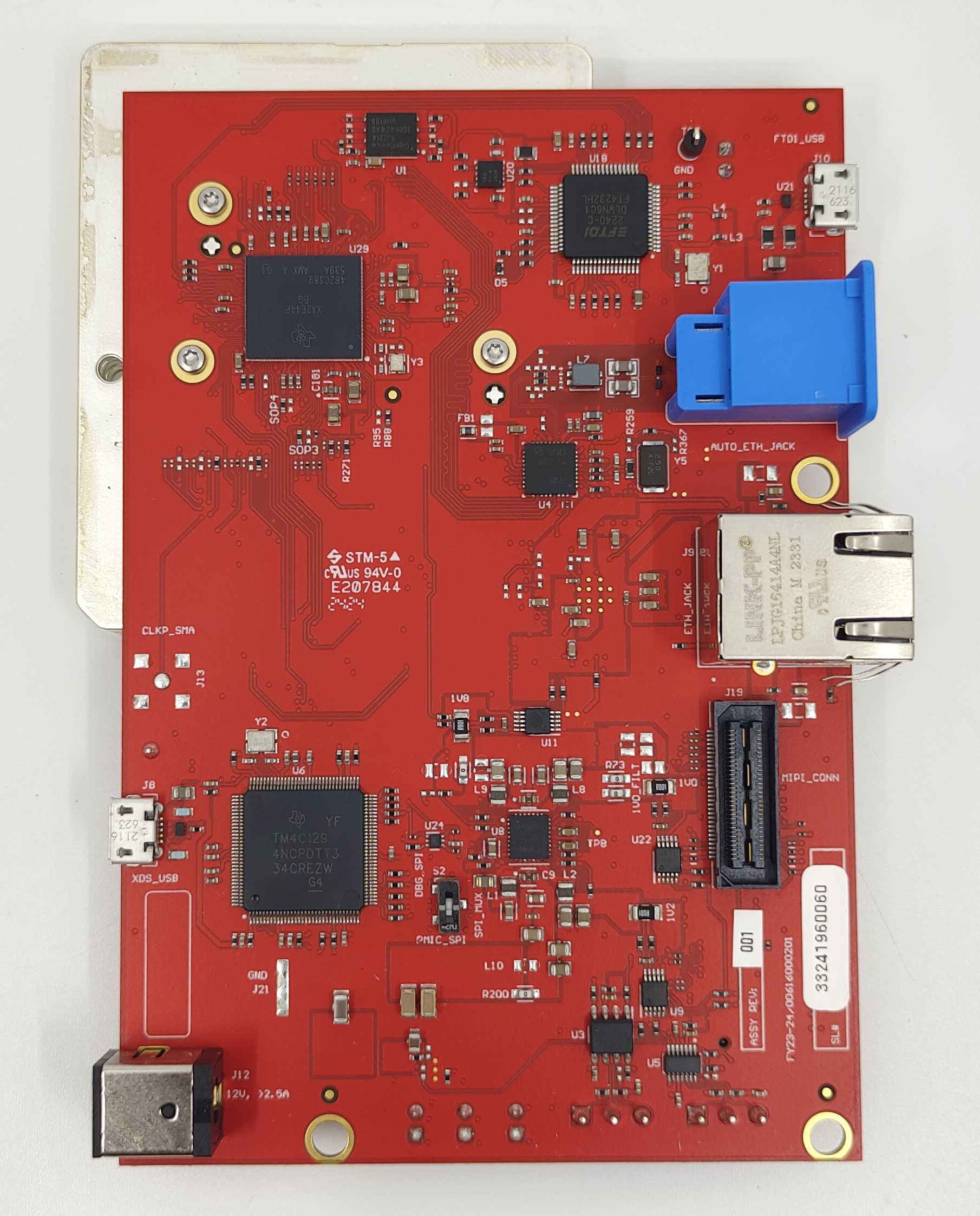SWRU631 November 2024
- 1
- Description
- Get Started
- Features
- 5
- 1Evaluation Module Overview
-
2Hardware
- 2.1 PCB Handling Recommendations
- 2.2 Power Connections
- 2.3 Connectors
- 2.4 Antenna
- 2.5 PMIC
- 2.6 On-Board Sensors
- 2.7 PC Connection
- 2.8 Connecting the AWR2E44PEVM to the DCA1000 EVM
- 2.9 Jumpers, Switches, and LEDs
- 3Software
- 4Hardware Design Files
- 5Additional Information
- 6Revision History
2 Hardware

Note: During operation, a minimum separation distance of 20 centimeters must be maintained between the user and the EVM.
 Figure 2-1 AWR2E44PEVM Front View
Figure 2-1 AWR2E44PEVM Front View Figure 2-2 AWR2E44PEVM Back View
Figure 2-2 AWR2E44PEVM Back View